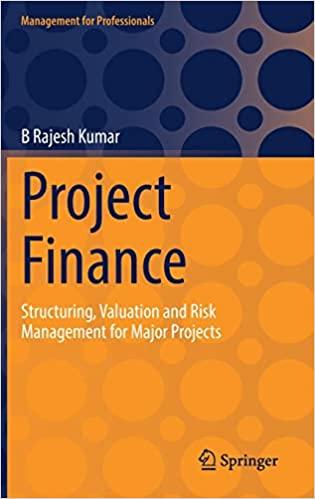Question
For questions 4-9 consider the following scenario and data. Air quality in Megalopolis is poor and getting worse. Heavy traffic, industrial growth, and poor geography
For questions 4-9 consider the following scenario and data. Air quality in Megalopolis is poor and getting worse. Heavy traffic, industrial growth, and poor geography have combined to produce frequent health warnings in the city, particularly during the summer. Violations of the ground-level ozone standard are especially frequent. During 2015, for example, there were more than 148 days in which Megalopolis exceeded the EPAs National Air Quality Standard for ground-level ozone of 70 parts per billion (ppb). Of equal concern is that ozone measurements have been as much as twice the EPA standard on violation days. On the worst days, school children are not permitted to go outside for recess, and sick and elderly individuals are strongly advised to stay inside. A recent study of air pollution by the Office of Technology Assessment has suggested measures to reduce emission of volatile organic compounds (VOCs), which would alleviate some (but not all) of the ozone problem in Megalopolis. Two strategies for reducing VOCs have been identified. You have been asked to assess the relative merit of these strategies using Cost-Benefit Analysis (CBA). To simplify the analysis, the city has asked for a study of benefits and costs for the ten-year period 2015-2024.
The two VOC-reduction strategies are as follows:
Policy Option I: Application of known pollution control measures at industrial sites. Initial costs are low, but costs are expected to rise over time as opportunities to apply existing pollution control measures to new situations become more costly.
Policy Option II: Substantial investment in research and development to foster and extend technological breakthroughs in elimination of VOCs in some products. Costs will be extremely high during the first two years, but will then fall as improved technologies become more cheaply available.
The city has decided to choose either Option I or Option II. Your task is to compare the two strategies. Epidemiological studies have been conducted to determine the likely benefits of VOC reductions. These benefits fall into three categories and are listed in Table 1. The annual expected costs of these strategies are listed in Table 2.
Table 1. Annual benefits with a one-ton reduction in VOCs (million $ per year)
| Category | Benefit/yr |
| Reduction in asthma attacks | 200 |
| Reduction in days of restricted activity | 200 |
| Reduction in severe coughing episodes | 100 |
| Total annual benefits | 500 |
Table 2. Annual costs to achieve a one-ton reduction in VOCs (million $)
| Year | Option I | Option II |
| 2015 | 300 | 1500 |
| 2016 | 350 | 1500 |
| 2017 | 400 | 100 |
| 2018 | 450 | 100 |
| 2019 | 500 | 100 |
| 2020 | 550 | 100 |
| 2021 | 600 | 100 |
| 2022 | 650 | 100 |
| 2023 | 700 | 100 |
| 2024 | 750 | 100 |
| Total | 5250 | 3800 |
Flag this Question
Following a general rule-of-thumb among economists, you decide to use a discount rate of 2%. Using this value for the discount rate and taking 2015 as the base year (i.e. t = 0), calculate the Net Present Value (NPV) of each strategy. Based on the dynamic efficiency criterion, which strategy would you recommend to city officials? (Hint: Use the NPV method presented in class and a spreadsheet program or a calculator to perform calculations. Also, remember that a 2% discount rate corresponds to a value of 0.02 in the NPV formula.)
4.) What is NPV (Option I) = $
5.) What is NPV (Option II) = $
6.) Which strategy do you recommend to city officials?
Step by Step Solution
There are 3 Steps involved in it
Step: 1

Get Instant Access to Expert-Tailored Solutions
See step-by-step solutions with expert insights and AI powered tools for academic success
Step: 2

Step: 3

Ace Your Homework with AI
Get the answers you need in no time with our AI-driven, step-by-step assistance
Get Started


